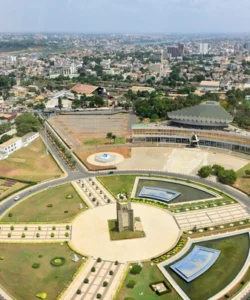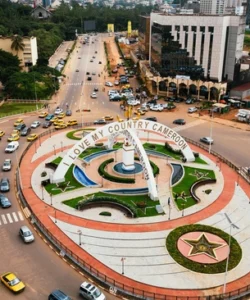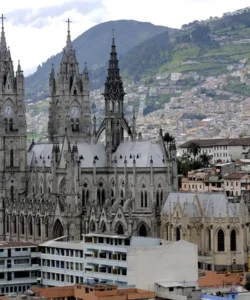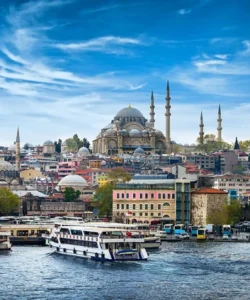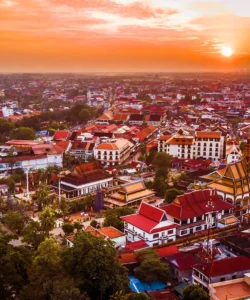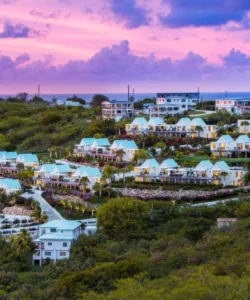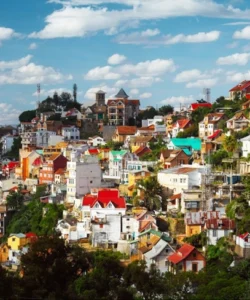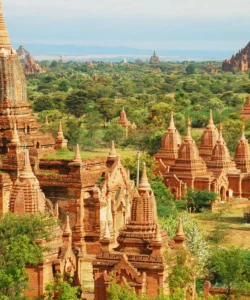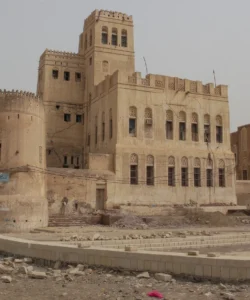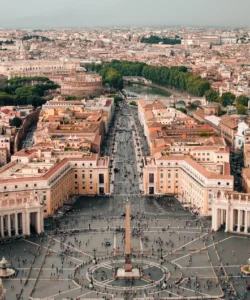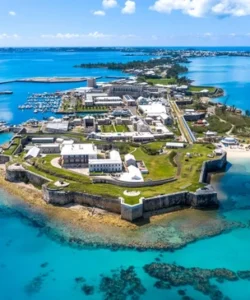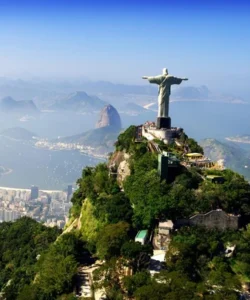The Netherlands, often colloquially referred to as Holland, is a country located in Northwestern Europe, known for its flat landscape, canals, windmills, tulip fields, and innovative water management. It is a constitutional monarchy with a rich maritime history and a liberal culture.
![]()
Area and Population:
The Netherlands covers a total area of approximately 41,850 km² (16,160 sq mi), with a significant portion of its land reclaimed from the sea. As of early 2025, its population is estimated to be around 17.9 million people.
Capital:
The capital city of the Netherlands is Amsterdam.
Major Cities:
Besides Amsterdam, other major cities include Rotterdam, The Hague (Den Haag – seat of government), Utrecht, and Eindhoven.
Language:
The official language of the Netherlands is Dutch. Frisian is also an official language in the northern province of Friesland. English is widely spoken and understood, especially in major cities and tourist areas.
Currency:
As a founding member of the European Union, the Netherlands uses the Euro (€) as its official currency.
Religion:
The religious landscape of the Netherlands is diverse, with a significant portion of the population identifying as non-religious or irreligious. Among those who do identify with a religion, Christianity (predominantly Roman Catholicism and various Protestant denominations) is the largest group, though its numbers have been declining. Islam is the second largest religion, particularly among immigrant communities. There is also a small percentage of other religions.
Attractions and Wonders:
- Canals of Amsterdam: A UNESCO World Heritage site, the picturesque canals are synonymous with Amsterdam, best explored by boat or by walking along their banks.
- Rijksmuseum, Amsterdam: The national museum of the Netherlands, housing a vast collection of Dutch Golden Age masterpieces, including Rembrandt’s “The Night Watch.”
- Anne Frank House, Amsterdam: A poignant museum dedicated to Anne Frank and her family, hidden during World War II.
- Van Gogh Museum, Amsterdam: Houses the largest collection of Vincent van Gogh’s paintings and drawings.
- Keukenhof Gardens, Lisse: One of the world’s largest flower gardens, famous for its spectacular display of tulips, daffodils, and hyacinths (open seasonally in spring).
- Kinderdijk Windmills: A UNESCO World Heritage site featuring a collection of 19 windmills, illustrating Dutch water management and dating back to the 18th century.
- Mauritshuis, The Hague: Home to Dutch Golden Age paintings, including Vermeer’s “Girl with a Pearl Earring” and Rembrandt’s “The Anatomy Lesson of Dr. Nicolaes Tulp.”
- Binnenhof, The Hague: The historic complex of buildings that houses the Dutch parliament.
- Delft Old Town: A charming historic city famous for its Delft Blue pottery and as the birthplace of Johannes Vermeer.
- Rotterdam’s Modern Architecture: Known for its innovative and diverse modern architecture, including the Cube Houses, Erasmus Bridge, and Markthal.
- Hoge Veluwe National Park: A vast nature reserve offering diverse landscapes, including heathlands, sand dunes, and forests, home to the Kröller-Müller Museum with its impressive art collection.
- Giethoorn: A picturesque village often called the “Venice of the Netherlands” due to its numerous canals and absence of roads.
Architecture:
Dutch architecture is diverse and highly influential, reflecting its history, geographical challenges (water management), and progressive design philosophy:
- Dutch Golden Age: Characterized by elegant canal houses in Amsterdam with gabled facades (step, bell, neck, and spout gables), often narrow and tall due to property taxes based on frontage.
- Traditional Windmills: Iconic structures embodying Dutch engineering for water management and milling.
- Modern and Contemporary: The Netherlands is a hub for innovative modern architecture, especially in Rotterdam (Cube Houses, Markthal, Erasmus Bridge) and Amsterdam (Eye Filmmuseum, sustainable urban developments). The De Stijl movement (Mondrian, Rietveld Schröder House) had a profound impact on modern design.
- Water Management Architecture: Dikes, polders, storm surge barriers (e.g., Maeslantkering), and modern pumping stations are significant architectural and engineering feats.
- Gothic and Renaissance: Visible in older churches and public buildings in cities like Utrecht and Leiden.
Roads:
The Netherlands boasts one of the most dense and high-quality road networks in the world. Despite its small size, it’s highly efficient for travel.
- Motorways (Snelwegen): An extensive system of well-maintained motorways connects all major cities and regions, marked with “A” numbers. There are generally no tolls for regular passenger vehicles, making driving quite convenient.
- Provincial and Local Roads: A comprehensive network of excellent provincial (N-roads) and local roads complements the motorways, providing access to smaller towns and rural areas.
- Cycle Paths: The Netherlands is famously bike-friendly, with an unparalleled network of dedicated, well-signposted cycle paths (fietspaden) that often run parallel to roads.
- Smart Traffic Management: The country utilizes advanced traffic management systems to optimize flow and reduce congestion.
Hotels:
The Netherlands offers a vast array of accommodation options, catering to all budgets and preferences.
- Luxury and Boutique Hotels: Especially prevalent in Amsterdam, The Hague, and Utrecht, ranging from historic canal houses converted into boutique hotels to international five-star chains (e.g., Waldorf Astoria, Sofitel, Grand Hotels).
- Mid-Range and Budget Hotels: A wide selection of comfortable and affordable options, including well-known chains and independent hotels, can be found in all cities.
- Unique Stays: Options like houseboat rentals in Amsterdam, farm stays in the countryside, and even glamping sites are available.
- Hostels: Popular in major cities for budget travelers.
Restaurants and Cuisine:
Dutch cuisine is generally hearty and comforting, historically influenced by its agricultural heritage and colonial trade. While often perceived as simple, there’s a growing movement towards modern Dutch cuisine and international influences.
- Stroopwafels: Thin waffles with a layer of caramel syrup in the middle, often eaten warm. A popular street snack.
- Poffertjes: Small, fluffy mini-pancakes, typically served with powdered sugar and butter.
- Haring (Herring): Raw herring, often served with chopped onions and pickles, is a beloved traditional snack, especially in spring.
- Fries (Patat/Friet): Thick-cut fries, typically served with a wide range of sauces, most commonly mayonnaise, but also peanut sauce, curry sauce, or a combination like “Patat Oorlog” (war fries).
- Stamppot: A traditional winter dish of mashed potatoes mixed with one or more vegetables (e.g., kale, endive, sauerkraut), often served with rookworst (smoked sausage) or meatballs.
- Erwtensoep (Snert): A thick pea soup, usually with smoked sausage and bacon, especially popular in winter.
- Kroket/Bitterballen: Deep-fried, crispy croquettes filled with a creamy meat (or sometimes vegetable) ragout, popular as snacks in bars or as appetizers.
- Dutch Cheese: World-famous cheeses like Gouda, Edam, and Maasdam are staples.
- Pancakes (Pannekoeken): Thin, large pancakes served with sweet or savory toppings.
- Drop (Licorice): A very popular candy in the Netherlands, available in many sweet and extremely salty varieties.
- Indonesian Cuisine (Rijsttafel): Due to its colonial past, Indonesian cuisine is very popular, with “Rijsttafel” (rice table) offering a vast array of small dishes.
- Craft Beer: A thriving craft beer scene has emerged in recent years, complementing traditional Dutch beers.
Dining ranges from cozy “eetcafés” and traditional Dutch restaurants serving hearty meals to a growing number of international restaurants and fine dining establishments, particularly in Amsterdam and other major cities.

